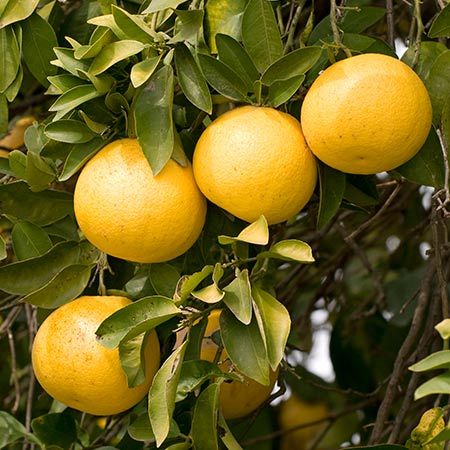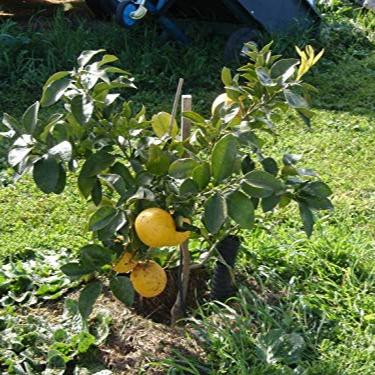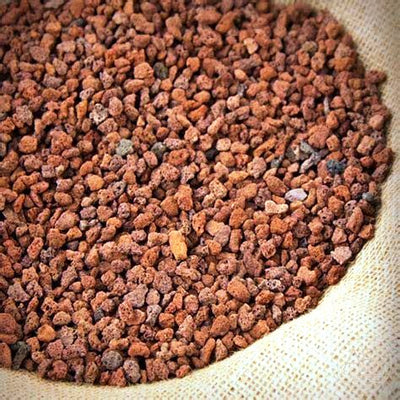

Live Grape Fruit Plant Suitable For Bonsai
Guaranteed Safe Checkout
The Grapefruit Plant
A Citrus Marvel Of Green Paradise
About Grapefruit Plant
In the lush expanse of botanical diversity, few plants capture the essence of both beauty and nutrition as eloquently as the grapefruit plant. Standing as a testament to nature's artistry, the grapefruit plant (Citrus paradisi) is not only a visual delight but also a source of numerous health benefits. This article delves into the fascinating world of grapefruit plants, exploring their origins, growth characteristics, nutritional value, and cultivation.
A Glimpse into History
- The origins of the grapefruit plant can be traced back to the 18th century in Barbados, where it was thought to be a spontaneous hybrid between the sweet orange (Citrus sinensis) and the pomelo (Citrus maxima).
- Over time, this hybrid gave rise to the grapefruit tree, which subsequently spread to various parts of the world due to its appealing taste and ornamental qualities.
Growth and Characteristics
- Grapefruit plants are evergreen trees that belong to the Rutaceae family.
- They are characterized by glossy, dark green leaves and fragrant white flowers that emit a sweet and refreshing aroma.
- The fruits, known as grapefruits, vary in color from pale yellow to pink and even red, depending on the variety.
- The growth of a grapefruit tree is a fascinating process.
- From the initial germination of the seed, it takes several years for the tree to mature and start bearing fruit.
- The tree requires a subtropical to tropical climate to thrive, with well-draining soil and adequate sunlight.
- With the right conditions, a mature grapefruit tree can reach heights of 15 to 20 feet.
Nutritional Riches
- Beyond its aesthetic appeal, the grapefruit plant offers a bounty of health benefits through its fruits.
- Grapefruits are a rich source of essential vitamins, particularly vitamin C, which boosts the immune system and promotes healthy skin.
- They also contain dietary fiber, which aids in digestion and can contribute to weight management by promoting a sense of fullness.
- What truly sets grapefruits apart is their unique phytochemical content, specifically the presence of antioxidants like lycopene and flavonoids.
- These compounds have been linked to a reduced risk of chronic diseases, including heart disease and certain types of cancer.
- Additionally, grapefruit consumption has been associated with improved insulin sensitivity and weight loss, making it a valuable addition to a balanced diet.
Cultivation
- Cultivating grapefruit plants requires careful attention and patience.
- The ideal growing conditions, including warmth and sunlight, must be maintained to ensure healthy growth.
- Adequate watering, while avoiding waterlogging, is crucial.
- Pruning is also necessary to shape the tree and promote air circulation, reducing the risk of diseases.
- In regions where the climate permits, home gardeners can experience the joy of nurturing their grapefruit plants.
- However, it's essential to note that grapefruit trees can take several years to produce fruit, and the resulting yield might vary based on factors like soil quality and weather conditions.
Growing Healthy and Juicy Grapefruit Plants: A Comprehensive Guide
Grapefruit, with its tangy-sweet flavor and numerous health benefits, is a delightful addition to any garden or orchard. If you're intrigued by the idea of plucking fresh grapefruits from your own backyard, you're in for an exciting journey. While growing grapefruit plants might seem daunting, with the right knowledge and care, you can cultivate healthy, thriving trees that bear delicious fruits. This article will provide you with a comprehensive guide on how to grow grapefruit plants successfully.
Selecting the Right Varieties
- Before embarking on your grapefruit-growing venture, it's essential to choose the right variety that suits your climate and preferences.
- There are several grapefruit cultivars available, each with distinct characteristics.
- Some popular varieties include Ruby Red, Marsh White, and Oro Blanco.
- Research your local climate and soil conditions to determine which variety will thrive best in your area.
Choosing a Suitable Location
- Grapefruit trees require a location that receives ample sunlight. Ideally, they should receive at least 8 to 12 hours of direct sunlight daily.
- The soil should be well-draining, slightly acidic to neutral (pH 6.0-7.5), and rich in organic matter.
- Before planting, it's advisable to conduct a soil test to ensure your soil meets these requirements.
Planting Grapefruit Trees
Prepare the Soil:
Dig a hole that's slightly larger than the root ball of your grapefruit plant. Mix compost or well-rotted manure into the soil to enhance its fertility and drainage.
Planting Depth:
Place the tree in the hole at the same depth it was in the nursery container. Gently fill the hole with soil, ensuring the tree stands straight. After planting, give the earth a good soak to help the soil settle.
Spacing:
Grapefruit trees need ample space to grow. Plant them at least 15 to 20 feet apart to allow for proper air circulation and sunlight exposure.
Caring for Grapefruit Trees
Watering:
Consistent and deep watering is crucial, especially during the tree's early years. Water the plant deeply, but avoid waterlogging. It is advised to use a drip irrigation system to supply water to the roots.
Fertilization:
Feed your grapefruit tree with a balanced fertilizer in spring, once new growth emerges, and again in late summer.
Avoidover-fertilization, as it can lead to inordinate leafage growth at the expenditure of fruit product.
Pruning:
Regular pruning helps maintain the tree's shape, improve air circulation, and eliminate dead or diseased branches. Prune during the dormant season, generally in late downtime.
Pest and Disease Management:
Keep an eye out for common pests like aphids, scale insects, and citrus leaf miners. Regularly inspect your tree for any signs of disease, and take appropriate measures if needed.
Harvesting Grapefruits
- The anticipation of harvesting your homegrown grapefruits is exciting.
- However, it's important to wait until the fruits are fully ripe before picking them.
- Ripe grapefruits will have a vibrant color and a slightly yielding feel when gently squeezed.
- Use pruning shears or a sharp knife to carefully harvest the fruits, leaving a short stem attached.


















